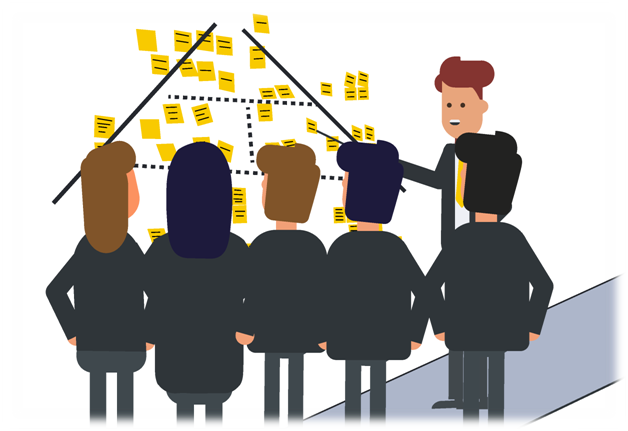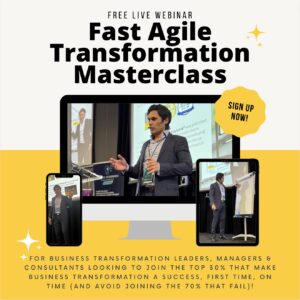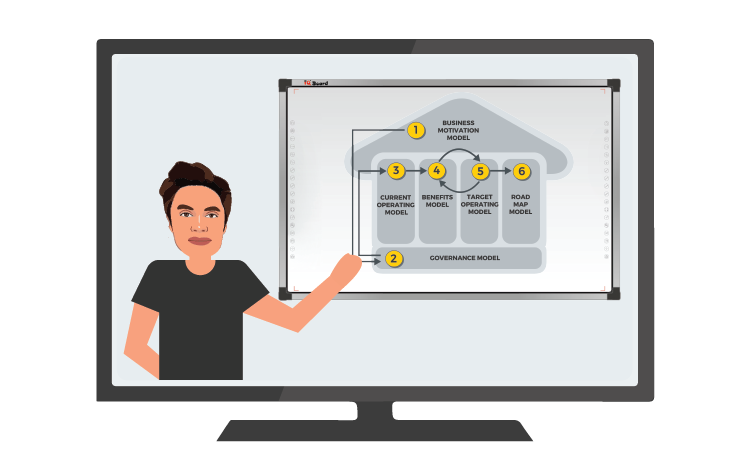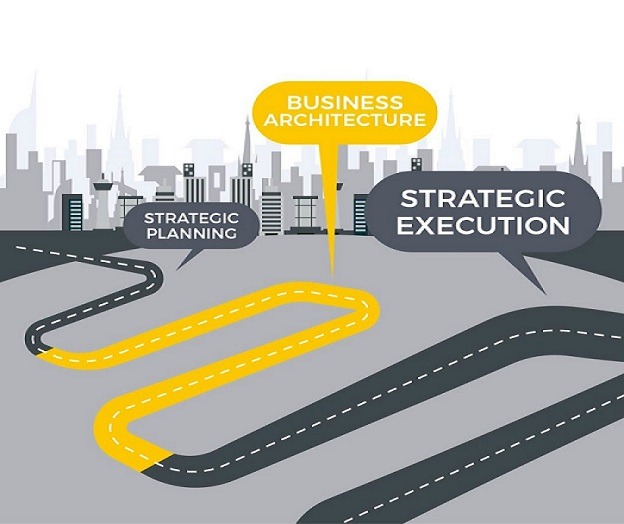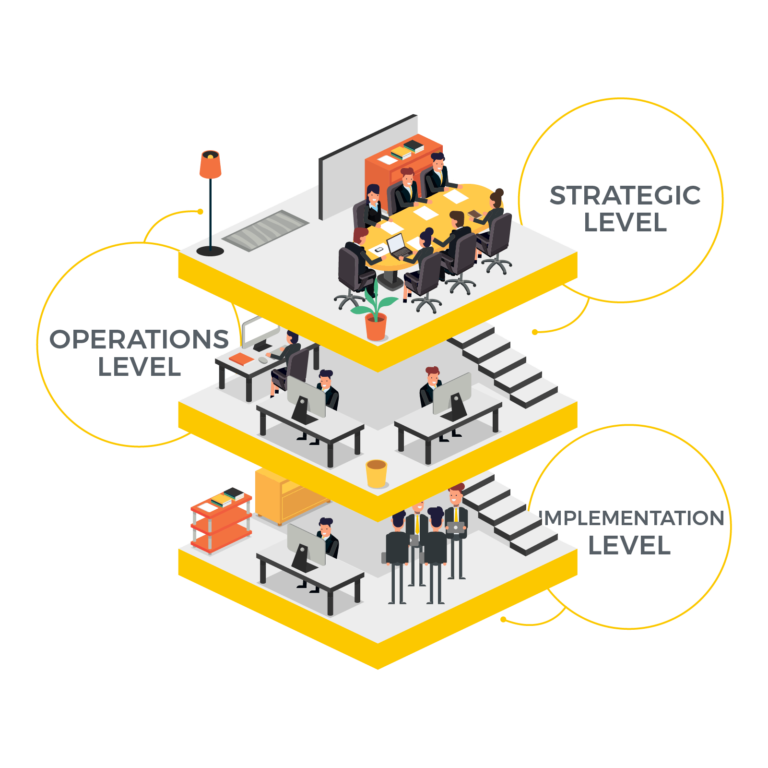If you’re a Consultant or a Consultancy, who leads your business transformation for your clients company, and struggles with getting maximum momentum on your transformation, then this post is for you. In this post, we’re going to discuss how to create a vision for your business transformation everyone gets behind.
To do successful business transformation, you must first understand and agree, there is two parts – structure (via HOBA), and a process. In terms of structure, that is HOBA and the six (6) reference models, and in terms of process, there is the 6-steps design process to take you through HOBA, and in doing so through the discovery, design, and implementation of your Target Operating Model (TOM). We wrote about it in this post here).
The first step in the design process is Focus. Focus is where you complete the first HOBA reference model – the Business Motivation Model.
The Business Motivation Model is where the Vision for the Organization, the Programme, and the Business Architecture work is developed and agreed upon.
It has the following four (4) Building Blocks:
1. Business Architecture Approach
The Business Architecture Approach is the physical ‘contract’ between the Business Architect and the Programme. It outlines the Business Architect’s role (i.e. You), responsibilities, expectations, and deliverables.
The Business Architecture Approach is the physical ‘contract’ between the Business Architect and the Programme. It outlines the Business Architect's role (i.e. You), responsibilities, expectations, and deliverables.
Heath Gascoigne Tweet
2. Business Strategy Mapping
Business Strategy Mapping is where you define the Business Strategy for the Transformation and Organisation.
3. Business Glossary
Defining the common terms and definitions as part of the glossary is done in the first step – Focus, to get everyone speaking the same language, using the same terms, that means the same thing to everyone. This all helps getting everyone on the same page quickly, pulling in the same direction.
4. Vision Mapping (we will delve deeper into this one in this article).
And, last but by no means the least – the Vision Mapping. Vision Mapping defines the Vision (the WHY?) for the Programme and decomposes it into how (the HOW?) the Vision is going to be achieved (ie the Strategy/ies), the Objectives of each strategy (the WHAT?), and when will their Objectives be achieved and how to measure the progress toward them (the WHEN?)
For the Vision to be meaningful, it needs to be decomposed in such a way it is meaningful and
measurable for all parties concerned – from the Executive level, down to the Operational and
Programme level.
Everything you design and build from this point on must align with this Vision. Vision Mapping is the second (2nd) building block in the Business Motivation Model, and although it’s the second (2nd) building block, it is really where the first place where ‘architecting’ takes place.
The purpose of this Building Block is to get a clear and agreed description of the Vision – the
outcome the Organisation is aiming to achieve from the Programme, that the Programme and
Business Architecture will and must support.
The blueprint to document the Vision mapping is the VSOM – Vision, Strategy, Objectives & Measures (download our free VSOM template here).

When you put this together, you want to workshop this with your Senior Leadership Team (SLT) in the Organisation. The members of the SLT are both leaders in the organisation and as leaders, represent the views, voices and opinions of their teams, and they bring those views to the table when putting it together.
What is important about this step – is the Vision is not developed from the PMO nor Project Management Office. It is from the Business. If you are setting up your programme and its inception, that VSOM is developed with the SLT. If you are developing the VSOM for a project within the Programme, then the key stakeholders are the next level down – the Senior Management Team (SMT). In both situations, your stakeholders represent the views of the people they lead and manage. This is how you get alignment from the top down. The people at the top, are representing the people below.
This is also where the crucial part comes in that is often missed on programmes. This is where the WIIFM (What In It For Me) comes in. When Stakeholders up and down the organisation contribute to that Vision (and VSOM), either directly or indirectly via their SLT or SMT, they see their views, and role they will play in that Vision.
As an example – on a recent HR Transformation we ran, the Vision for the HR Division, developed with the HR SMT, was “To be a trusted strategic people partner to help the Business continuously improve”. That single Vision statement addressed several concerns, tensions and aspirations the HR Division had for itself, but also how the Organisation looking at the HR Division, saw them also. That one Vision statement, was the one thing that got the whole program, and the Organisation behind the program, in a matter of days, not weeks nor months!
If you want to see how we facilitate our VSOM workshops, check out the HR Transformation Case Study here.
There are two blueprints that make up the Vision Mapping Building Block:
A. VSOM Map
VSOM mapping gives you a visual and logical representation of the Vision (statement) & provides a single FOCUS for the programme (or project)
It addresses the following aspects
- Vision – WHY do we do this?
- Strategy – HOW we will achieve it?
- Objectives – WHAT are the outcomes of each strategy?
- Measures – WHEN will these objectives be achieved?
Creating the VSOM Map is a practical planning process that helps define the Vision and laying
out what needs to happen to achieve the Vision, and what the criteria are to measure success.
As a result, you are able to identify the outcomes ahead of time during the business transformation.
B. VSOM Table
It provides the much-needed and necessary sources of the details provided in the VSOM Map.
The design table is effectively the same information but just with the source of where these different elements came from.
How Vision Mapping helps you achieve business transformation goals?
Vision Mapping helps achieve the Business Transformation goals in three (3) major steps. Vision Mapping provides:
- The single focus for the project;
- The No. 1 requirement for the project – that ALL requirements under the project should to, trace from, and back to (in two-way traceability). Once everybody gets on the same page, they can achieve results better & seamlessly, and
- A ‘sanity check’, that if any activity under the project cannot be traced to or from the Vision, we need to ask why are we doing it?!
Why do we prefer VSOM for Vision mapping
Completing the VSOM Map and Table is a lot more straightforward than the SOW which gives a roadmap to business transformation.
How does it work? You define the Vision, decompose it into how it is going to be achieved, identify the objectives for each, and agree on the Measures for each.
As a result, you will have achievable tasks rather than just a bunch of documentation without any practical implementation.
What are the rules of VSOM?
The rules of VSOM are as follows:
- There is only one Vision (the ‘Why’)
- There may be one or more Strategies (the ‘How’) to achieving the Vision
- Each Strategy may have one or more Objectives (the ‘What’)
- Each Objective will have one or more Measures (the ‘When’)
- Effective Objectives will be S.M.A.R.T (Specific, Measurable, Achievable, Realistic and Timebound).
Thank you for reading this!
Sincerely,
Heath Gascoigne
P.S. If you want to join our Business Transformator community of over 2,000+ like-minded Business Transformators, join the community on the Business Transformator Facebook Group here.
P.P.S. If you want to learn more about business transformation, check out The Business Transformation Playbook here.
For more information, visit https://www.hoba.tech

